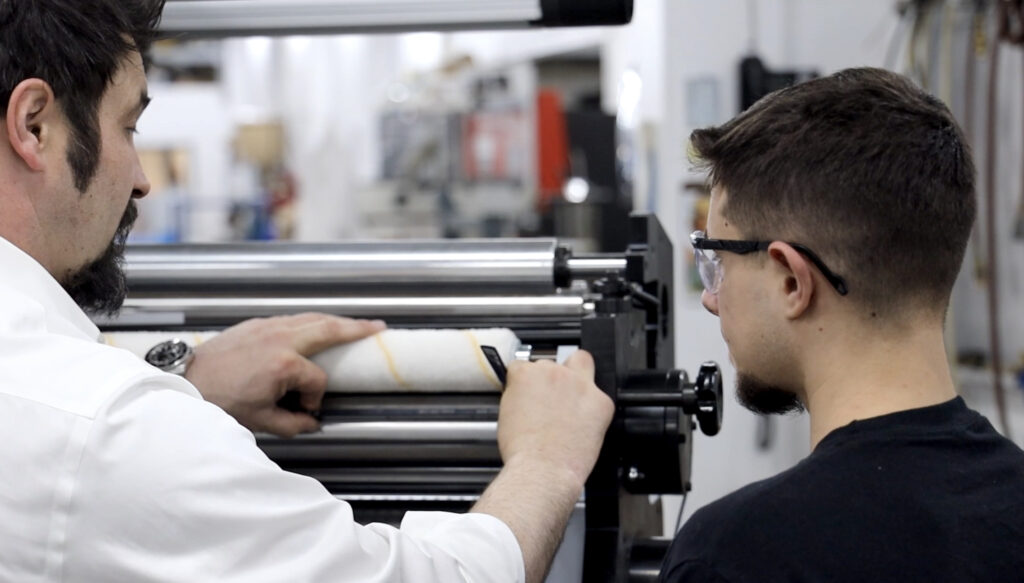RFID insertion provides many benefits for retailers, improving the supply chain and assisting in determining optimal inventory levels of products. Too much product in inventory increases expenses with storage and warehousing costs. Maintaining proper inventory levels can save retailers anywhere from 20 to 30% in storage costs alone. RFID technology has the ability to scan SKU numbers to determine any differences in products. According to RFID Journal, retailers can save anywhere from 20% to 30% in warehousing costs by implementing RFID.
What are the Main Features that RFID Provides?
Inserting RFID tags improves warehouse efficiency and provides solutions to many operational challenges with real-time, reliable data. RFID technology makes data collection more accurate, streamlined, and efficient.
The main benefits of using RFID in storage and warehouse facilities include:
- The ability to hold up to 100 times more data than a simple barcode
- There is no line of sight required with RFID tags or tickets in many cases
- RFID tags can make products functional when in and out of the warehouse
- RFID readers have scalable ranges with UHF, HF, and LF tags
- Quicker reading of multiple tags with just one scan
- Positioning is flexible for reading individual products and full pallets
With these many features, RFID technology provides a host of benefits to warehouses and retailers.
What are the Main Benefits of RFID Technology in Warehouses?
Warehouses execute a more streamlined workflow when incorporating RFID technology. The main benefits of RFID technology in warehouses include:
Precise Inventory Accuracy
Using RFID tracking in warehouses automates data collection of critical information such as product locations, quantities, and SKU numbers and can integrate that directly into warehouse management systems (WMS). RFID tags on pallets deliver data instantly to a WMS or Enterprise Resource Planning (ERP) system to provide valuable, real-time information on inventory items. Improving the accuracy of inventory helps businesses to reduce costs, dock-to-stock cycle times, and sales order delivery times.
Workflow Automation Improves Productivity
Improving the flow of goods throughout the entire warehouse reduces waste and improves productivity. RFID technology tracks items in real-time to improve production workflow with significantly improved efficiency.
Eliminates the Risk of Human Error
Due to the high level of accuracy of RFID technology coupled with real-time data, the risk of human error is eliminated. RFID tracking diminishes the chance of human error in manual warehouse tasks.
Reduces Labor Costs
By improving material and product workflow, efficiencies and productivity, companies are positioned to reduce labor expenses. RFID significantly reduces the time and labor involved with tracking goods, recording, and reporting vital information, thus saving labor time and money. All of these improvements equate to an improved bottom line.
RFID technology in warehouses provides these benefits and others with improved accuracy, efficiency, and speed. Operating costs are lowered as facilities boost throughput with accurate automation.
Tamarack offers RFID inlay insertion solutions with the MVW Offline RFID Inlay Insertion Equipment and the MVW Inline RFID Inlay Insertion System, proven to deliver these benefits to many companies in a broad range of industries. With more than 50 years of experience, Tamarack differs from other web finishing equipment suppliers in our level of technical expertise and commitment to total customer satisfaction.
Tamarack® Products is a leading global manufacturer of high-quality web finishing machinery and equipment, including RFID inlay insertion equipment. Easily create RFID tags, labels, cards, and more with proven RFID insertion equipment. Contact us with any questions and to learn more about the many benefits of integrating RFID in your warehouse.





